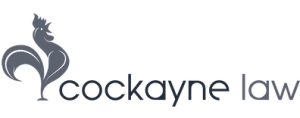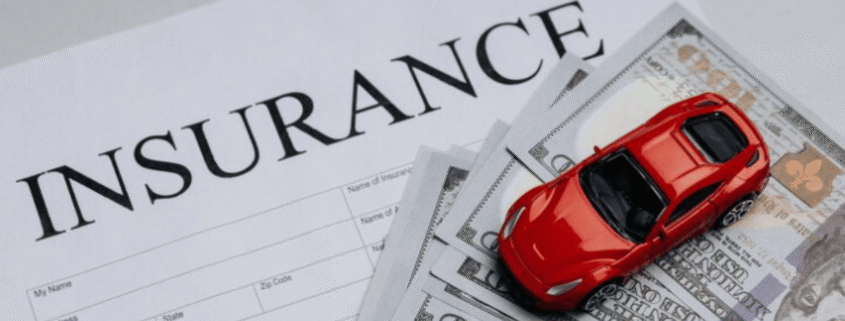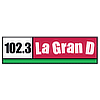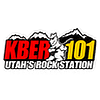What You Need to Know About Uninsured & Underinsured Motorist Coverage in Utah?
If a driver hits you in Utah and has no insurance or too little, your own policy can still protect you. A common way to meet these needs is through uninsured motorist and underinsured motorist coverage, often called UM and UIM.
In the event that the other driver falls into financial difficulty, these coverages will cover the cost of medical care, wages, and pain and suffering. Due to Utah’s no-fault insurance policy, most people begin with personal injury protection. Then, if your injuries are serious or your bills pass a set dollar amount, you can make a claim against the at-fault driver and, when needed, your UM or UIM.
A car accident attorney in Utah can explain how these parts work together and protect your rights from day one. In the guide below, you will see how UM and UIM work in Utah. Also, what limits make sense, how hit-and-run claims are handled, and what deadlines and steps matter most.
Key Takeaways:
- Utah policies include UM and UIM unless waived.
- No-fault PIP minimum medical is $3,000.
- Threshold injuries allow claims beyond PIP.
- New liability minimums rose in 2025.
- UM can cover hit-and-run events.
- No contact hit-and-run needs strong proof.
- Stacking is limited under Utah law.
- UM and UIM lawsuits have 4-year limits.
- Arbitration is an option for many claims.
- UIM timing ties to the last liability payment.
(Source: Motor Vehicle Insurance Utah)
What Uninsured Motorist Coverage Means in Utah?
A driver who is at fault for an accident but does not have liability insurance is covered by uninsured motorist coverage. In Utah, UM is built into auto policies unless you reject it in writing. Covered people include you, your family, and passengers.
UM can pay for medical care, lost income, and pain and suffering if a driver without insurance causes the crash. It can also apply when you are a pedestrian or a bicyclist struck by a motor vehicle. These protections help when a driver breaks the law by not carrying insurance, or when a hit-and-run makes it hard to recover from anyone else’s policy.
Utah’s insurance code places UM into the core parts of a policy unless you sign a waiver, so most drivers carry it without noticing the fine print. Keeping UM on your policy is one of the lowest-cost choices that can make a major difference after a serious crash.
It is your safety net when the other side has nothing.
What Underinsured Motorist Coverage Does for You?
In cases where the at-fault driver’s liability limit is insufficient, underinsured motorist coverage helps fill the gap. Say your losses are higher than the other driver’s policy. Once that policy pays out, your UIM can pay the rest up to your own limit.
Utah policy forms usually set UIM equal to your liability limit unless you choose a lower amount or reject it in writing. Many people never adjust to it, but it is wise to pick a limit that matches the real cost of a hospital stay and time off work. UIM has rules on how it fits with other coverages, so there is no double recovery.
The goal is to make you whole within the combined limits, not to pay the same dollar twice. A seasoned car accident lawyer in Utah will often help you time the UIM claim, coordinate the liability settlement, and protect your right to seek the balance from your own insurer.
Coordination rules that matter
Utah sets order of coverage and bans most interpolicy stacking. The coverage on the car you occupied is primary, and certain household policies can be secondary, but stacking beyond what the law allows is restricted. This makes early planning important so you use the right policy first.
Utah No-Fault Rules: PIP and When You Can Claim More
Utah uses no-fault insurance, called personal injury protection. Every standard auto policy must include at least $3,000 in medical PIP benefits per person, with added wage loss and household help benefits available under the statute. PIP pays quickly without proving fault. It helps you see a doctor and keep bills from going to collections.
Depending on the circumstances, you may be entitled to compensation from the at-fault driver. Having more than 3,000 dollars in medical expenses, being permanently disabled, disfigured, or having suffered a fracture is possible.
In these cases, you can file a liability claim. And if the driver does not have insurance or does not have enough insurance, you can file a UM or UIM claim.
What Are Minimums and Recommended Limits in 2025 and Beyond?
Taking effect on January 1, 2025, the Utah government has increased its minimum liability limits to:
- $30,000 per person
- $65,000 per accident
- $25,000 for property damage
The new minimums must be met by policies written after that date, as well as policies renewed after that date.
Your UM and UIM options are tied to your liability limits unless you sign a waiver or pick less. In plain terms, if you set higher liability, you can match your UM and UIM to those higher numbers.
That is often smart because hospital care, imaging, and follow-up therapy add up fast. Talk with a car accident attorney in Utah about setting uninsured & underinsured motorist coverage at least equal to your liability. And consider higher limits if you can afford the small premium bump.
Many Utah households base their budgets on $100,000 or $250,000 per person. One serious crash can exhaust minimum limits in days, so buying extra protection now is affordable peace of mind.
A word on waivers
Insurers must offer UM and UIM. To lower or reject them, you must sign an acknowledgment. Keep a copy. If you never signed a waiver, your policy should include these coverages by default under Utah law.
Hit-and-Run Claims: Proof You Need in Utah
Hit-and-run crashes are common on busy roads and in parking lots. UM can cover injuries from a driver who flees. If there was contact between the vehicles, the proof is usually straightforward.
If there was no physical contact, Utah has a special rule. You must show the existence of the phantom vehicle by clear and convincing evidence that is more than your own testimony.
Independent proof can include a witness, video, debris, or other physical signs. This rule exists to stop fraud, but it also means you should act fast to gather proof. Call the police right away, get names and numbers for any witnesses, save your dashcam video, and photograph damage and skid marks.
Your insurer will ask for these items during the UM review. If the company still disputes liability after you provide proof, Utah’s UM procedures let you push the claim ahead by arbitration or suit.
Filing a Uninsured & Underinsured Motorist Claim: Steps, Timing, Arbitration
Start with medical care. Report the crash to the police and your insurer. Tell your company you may have a UM or UIM claim. Share medical records and bills, proof of wage loss, and any photos and videos.
For UM, you can demand payment once liability and damages are clear, then choose arbitration or court if you cannot agree on the value. For UIM, you usually settle the at-fault driver’s policy first, then pursue the difference.
Utah gives you four years to bring a UM lawsuit after the inception of loss. It also gives four years for UIM, but the clock starts on the date of the last liability settlement check, which can be later than the crash date.
Many policies allow or require arbitration. Utah law spells out arbitration rules, discovery, and cost sharing. Filing for arbitration on time counts as filing for the statute of limitations, which helps protect your claim. A local car accident lawyer Utah can guide these steps and avoid timing mistakes.
Stacking and coordination
Utah limits interpolicy stacking. The policy on the car you occupied is primary. Household policies may be secondary, within statutory limits. The law also bars most setoffs against workers’ compensation and allows health insurers to recover only after you are made whole and only for medical and funeral costs. These rules aim for fair pay without double recovery.
Hire the Top-Rated Car Accident Attorney in Utah – Chris Cockayne
When your case involves UM or UIM, strategy matters. Settlements, deadlines, and policy language must all line up the right way. Chris Cockayne and his team at Cockayne Law focus on injury claims for Utah families.
They listen, explain your options in plain words, and move fast to protect the claim. The firm builds cases with medical proof, wage records, and witness statements. They also know how to handle disputes over hit-and-run proof, limits, and arbitration.
If the other driver’s insurance is not enough, they press your UIM claim at the right time so you do not miss the window. If you prefer, they can use arbitration to speed things up and hold costs down.
If you need a car accident attorney in Utah who is practical and steady, they are ready to help. You can also ask the team what UM and UIM limits fit your budget, so you are safer before the next drive.
Final Thoughts
UM and UIM are quiet parts of your auto policy that carry real power after a crash. They help when the other driver has no coverage or not enough. Utah’s rules on no-fault, thresholds, proof, stacking, and deadlines shape how and when you can recover.
Keep UM and UIM on your policy, match them to your liability limits, and strongly consider higher limits if you can. If questions come up, a car accident in Utah can spot the best path and protect you from avoidable delays.
FAQs
Do I have UM and UIM by default in Utah?
Yes, Utah policies include UM and UIM unless you reject them in writing. Ask your agent for your signed forms if you are not sure you ever waived them.
What is Utah’s no-fault PIP minimum?
At least $3,000 per person in medical benefits, with other statutory benefits also outlined in the law. PIP pays first, regardless of fault, to get you treated.
Do these thresholds apply to UM claims?
No. The threshold rule does not apply to uninsured motorist claims. You can pursue non-economic damages under UM without meeting the threshold.
Can I stack UM or UIM from several policies?
Utah restricts interpolicy stacking. The coverage on the car you were in is primary. You may reach one other policy in limited cases, but broad stacking is barred.
Is arbitration available for UM and UIM disputes?
Yes. Utah law lets claimants elect binding arbitration or go to court. Arbitration has set rules for discovery, fees, and timing, and filing it preserves your deadline.









